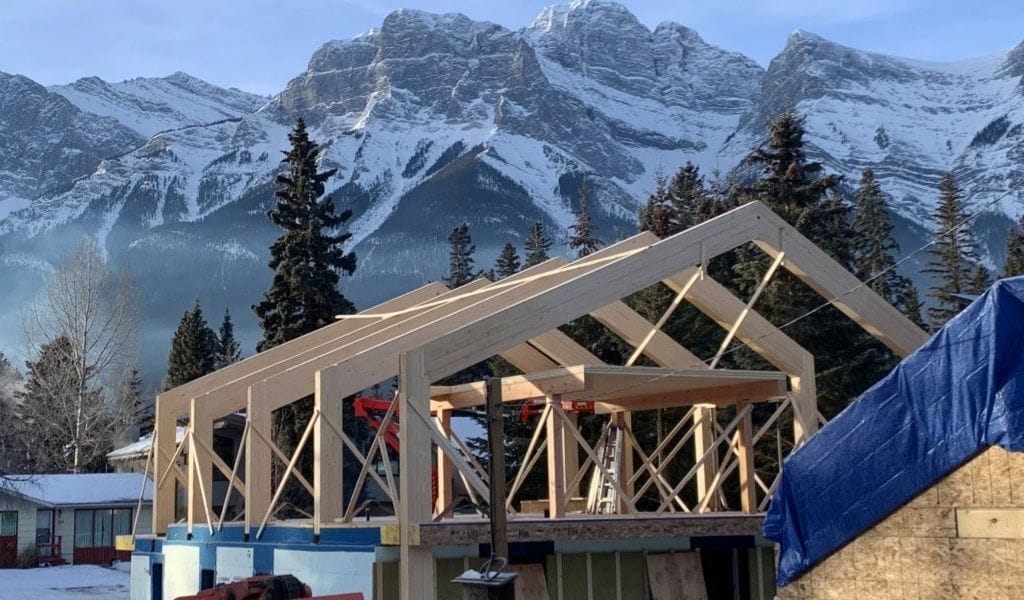- Bow Valley Insider
- Posts
- Construction Waste Is One of Canmore’s Biggest Problems. A New Strategy Aims to Change That.
Construction Waste Is One of Canmore’s Biggest Problems. A New Strategy Aims to Change That.
Canmore advances a multi-year plan to boost recycling of construction materials and reduce pressure on the landfill.

Canmore is moving ahead with a major shift in how construction and demolition waste is handled in the Bow Valley, with staff outlining the next steps of a regional circular economy strategy designed to reduce one of the area’s largest sources of landfill material. The latest update includes new short-term targets, progress on multi-municipal collaboration, and confirmation that a dedicated Zero Waste Coordinator will begin work next year.
At the center of the work is construction, renovation, and demolition waste, known as CRD. It is one of the single largest contributors to landfill volume in the region. Staff emphasized that improving CRD management is essential if Canmore and its partners hope to meet their long-term waste reduction goals.
The plan’s immediate priority is to significantly increase “diversion rates,” a measure of how much waste is kept out of landfills through recycling, reuse, deconstruction, or other recovery methods. The current goal is to get diversion rates above 70 percent for CRD materials in the short term. Staff explained that this means more than 70 percent of construction-related waste would be diverted away from landfills and into some form of recovery stream, rather than being disposed of outright. Achieving this would mark a major shift in how the sector operates locally.
To support that work, the regional strategy sets out a coordinated framework across Canmore, Banff, and the Municipal District of Bighorn. The approach is designed to align policies, permitting requirements, education, and enforcement across municipal boundaries so contractors face consistent expectations no matter where projects are located in the Bow Valley.
Staff told the committee that several elements of the plan are already underway. Municipalities are progressing on shared permitting guidelines for CRD waste management, improved tracking of materials, and expanded education for builders about how to separate, divert, or responsibly dispose of construction materials. Officials said collaboration with private-sector haulers and processors has also improved, particularly around identifying local bottlenecks in recycling or reuse capacity.
One of the most significant steps forward is the newly approved Zero Waste Coordinator position, which will be hired next year. Staff said the role will be responsible for overseeing implementation of the circular economy strategy, including contractor outreach, compliance efforts, data collection, and support for regional alignment. The position will also help evaluate gaps in CRD diversion options and work with partners to expand local opportunities for material reuse.
The broader circular economy initiative is grounded in the Bow Valley Waste Management Commission’s existing framework, which identifies CRD waste as a critical focus area. The region’s waste composition studies show that construction materials account for a large share of the solid waste stream, meaning even modest improvements in diversion could have significant effects on landfill lifespan and environmental impact.
The long-term objective is to move the region toward zero construction waste entering landfills. Staff noted that this is a decades-long goal that will require ongoing alignment between municipalities, builders, waste haulers, processors, and regional partners. The first phase of the strategy focuses on policies and practices that are achievable in the near term, combined with a clearer system for tracking progress as diversion rates increase.
While the updated plan is still in its early stages, staff described the momentum as positive. With the new coordinator position in place next year, municipalities expect implementation to accelerate, particularly on the education and compliance side. Several councillors acknowledged that the construction sector has a large footprint in the Bow Valley, and improving how its waste is managed will be essential for environmental goals across the region.
The circular economy strategy will continue to be refined through 2026, with more detailed reporting expected once the Zero Waste Coordinator has begun work and additional regional systems are in place.
Reply